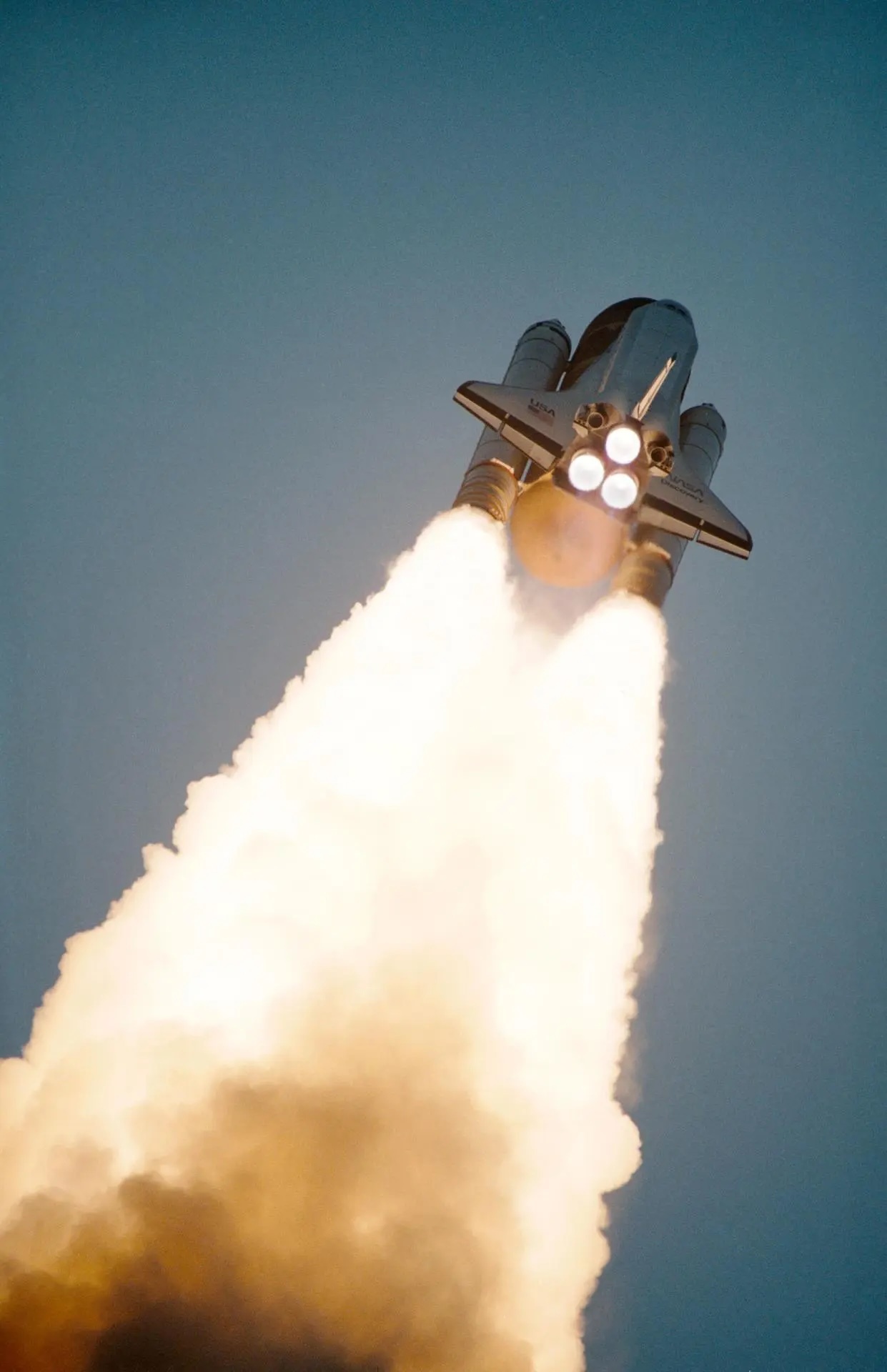11.10.2025
When Space Shuttle Discovery touched down for the last time at Kennedy Space Center Runway 15 on March 9, 2011, it brought to an end a 27-year career of spaceflight. Discovery flew to space 39 times, spending almost a year of cumulative time in orbit. During this career, it helped build the International Space Station, serviced the Hubble Space Telescope and delivered many satellites to orbit, cementing its place in spaceflight history.

Discovery Launch, NASA
Now, 14 years after it endured the hellish heat of reentry to earth’s atmosphere for the 39th time, Discovery is facing a challenge it may not survive. But this time, it’s not the intense rigors of space travel that threaten to tear the storied orbiter apart; it’s the Trump administration. Contained within Trump’s “Big Beautiful Bill” was a funding allocation of $85 million to move Discovery from its intended final resting place in the Smithsonian’s Udvar-Hazy Air and Space Museum in northern Virginia to the Houston Space Center in Texas.
The provision, championed by Texas senators Ted Cruz and John Cornyn, would require a truly monumental effort to actually implement. The Shuttle Carrier Aircraft, the pair of modified Boeing 747s originally built to transport orbiters over large distances, have long since been disassembled and put on display, leaving their use in transporting Discovery out of the question. This leaves only one extremely disturbing possibility: in order to transport the oversized vehicle over 1000 miles to Houston, it would need to be disassembled. This would mean removing the wings and vertical stabilizer from the fuselage to be transported separately, among other destructive processes. In addition to this already horrifying prospect, the whole process is estimated to cost approximately $150 million, a fair bit over the $85 million appropriated.
This all raises the question of why? Why go to all this effort, spend all this money and irreparably damage the most intact and oldest orbiter in the Space Shuttle fleet to move it from one museum to another? The answer is politics, of course. While the fate of Discovery is a small part of the larger political battle between red and blue states over funding and federal resources, the roots of this conflict go much further back to the original selection process for the distribution of the retiring orbiters.
When the space shuttles were first set for retirement in 2003, NASA, faced with the question of what to do with the retiring spacecrafts, decided to give them to museums across the country. In 2008, the agency put out a request for proposals from educational institutions for where to display the shuttles, and 29 museums submitted requests to display them. These proposals were evaluated on several metrics, including annual attendance, international access, the capacity to safely maintain and house the orbiters and the financial capacity of the institutions to ensure continued access.
When the final decisions were made, four institutions were given shuttles. The Smithsonian Institute, the California Science Center and the Kennedy Space Center Visitor Complex were given space-flown orbiters, while the Intrepid Museum in New York City was given the atmospheric test vehicle Enterprise. Notably absent from this list was the Houston Space Center. Though Houston had contributed greatly to the Shuttle program, NASA found that the museum had nowhere near the required funding or facilities required to house the Shuttle, much less to provide free access to it like the Smithsonian.

The Trump Administration wants to bring the Space Shuttle Discovery to the Space Center Houston. The Space Center Houston held Sensory Friendly Event on Sept. 20, 2025. Photos courtesy of @spacecenterhou on Instagram, caption(s)
Evidently, the Texas senators who want to disassemble and move the shuttle disagree with this conclusion. Despite an Office of Inspector General report concluding that there were no political influences on the selection process, the decision to pressure NASA to prepare the vehicle for transfer was made regardless. This process faces some immediate legal obstacles, however. Namely, the federal government no longer owns Discovery. Legal ownership of the orbiter was signed over to the Smithsonian shortly after it arrived at the museum in 2011. Unsurprisingly, though, frivolous obstacles such as legality don’t seem to matter much to proponents of the move.
Due to the whims of the current administration, we are faced with the prospect that the oldest, most intact surviving space shuttle orbiter will be chopped up and moved to Houston for an exorbitant cost. There, it will likely be sat in storage for several years waiting for a proper exhibit to be built (a project for which absolutely no funding has been appropriated), where visitors will almost certainly be charged admittance to view it. And the best part? This is all happening because Texas didn’t want to make the effort to set up a proper exhibit when the shuttles were first given out.
Let’s return to the original question: why should we move Discovery? The answer is that we shouldn’t. I know it’s difficult to appeal to the sensibilities of people who are willing to ignore legality, practicality, and cost to make up for their own failure and lack of planning, but given no other options, I will anyway. To those pushing for this transfer, stop. This will cause immense damage to one of our country’s most incredible technological artifacts, all to steal a spacecraft that I doubt most of you truly know or care much about.
Quelle: THE DAILY CAMPUS
